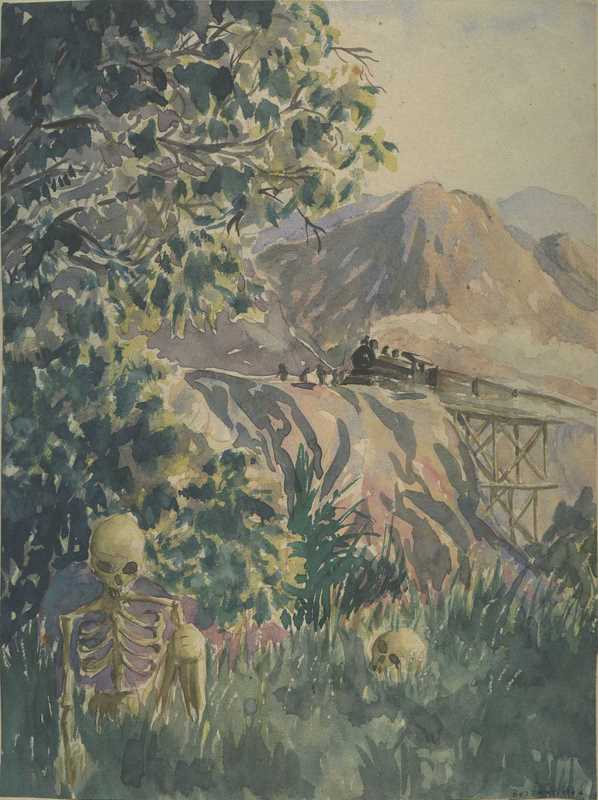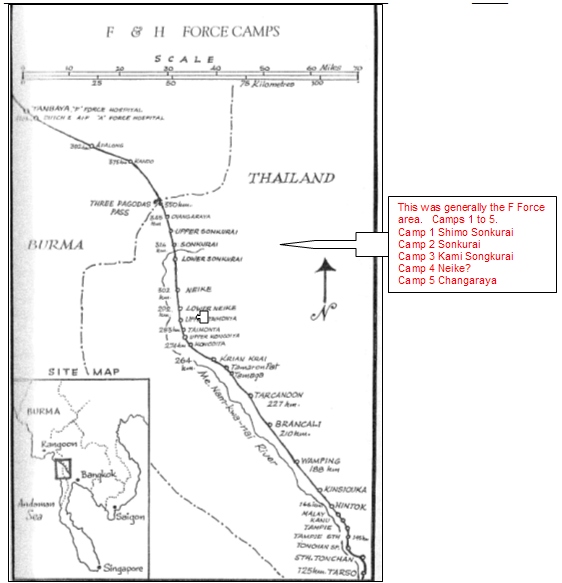
The move to Tha Khanun was particularly gruelling.Ī shuttle system had to be employed whereby fit and nearly fit (who by now were very few) marched to the next camp, erected tents, dug latrines, prepared cookhouses etc. Insufficient tents, Burmese camped beside camp … water a problem-all had to be boiled-shortage of dixies-Rice and onion stew only.' The medical officer, Roy Mills, wrote of Lower Taimonta: It was fragmented and moved across various camps, including Taimonta and Tha Khanun to the south, where it remained for two months. Pond's battalion had a particularly difficult time. Konkoita would become the focal point of the cholera outbreak that spread throughout the F Force camps, carried by POWs passing through this camp on their way north. The Australians were immediately employed on bridge and road construction, but within five days cholera broke out in the nearby rǒmusha camp. Few huts were roofed and the area, previously occupied by ràµmusha, was filthy. Pond, who reported to Lieutenant Maruyama of the Imperial Japanese Army Engineers.Ĭonditions at Konkoita were appalling. Separated from the rest of F Force until December 1943, they were under the command of the Australian Lieutenant-Colonel S.A.F. Seven hundred Australians were halted on 10 May on their march north, at Konkoita, a short distance before Shimo Ni Thea. Later in 1943, Changaraya served as a staging camp when the Japanese agreed that some of the most seriously ill of F Force should be transferred to Thanbaya, a hospital camp in Burma. Men who were convalescing from cholera were forced out to work by the Japanese, as were those prisoners who were desperately ill from dysentery and malaria. Ultimately 159 men, or 23 per cent of the 700 British at this camp, died of this disease. Despite the incessant rain, water for drinking and cooking had to be carried a long distance, with almost no buckets or containers being provided by the Japanese.Ĭholera broke out at Changaraya on 26 May with devastating results. Prisoners and rǒmusha lived in close proximity, the grounds were waterlogged and sanitation was almost impossible to maintain in the monsoon conditions. Some Australians would join the British here in August 1943.Ĭonditions at Changaraya, one kilometre from the border with Burma, were particularly deplorable.

5)Ĭhangaraya, like Songkurai, was at first a British camp. However, its hospital progressively accumulated some 400 seriously ill from nearby camps. With almost incessant heavy rain from mid-May to September, the camp became a quagmire.ĭespite widespread dysentery, malaria, beri beri and diarrhoea, the rates of sickness at Ni Thea were lower than at other camps in the region. A small natural stream, flowing through a depression, provided water. Initially the camp consisted of two partially roofed huts and seven large unroofed huts which had previously been occupied by Asian labourers or rõmusha. At its peak 1075 prisoners were based there, of whom 450 were Australians. Though close to the railway, it was a transit camp rather than a working one, with men going up country and returning to Kanchanaburi when the railway was completed late in 1943. Shimo Ni Thea was the headquarters of F Force from early May to mid-June 1943. Australians were mostly located at Shimo Ni Thea, Shimo Songkurai, Kami Songkurai, Konkoita and Tha Khanun. On reaching Ban Pong in Thailand, F Force was then forced to march over 300 kilometres to camps near the border with Burma (now Myanmar).Īrriving up country in early May, F force was ultimately spread across at least six camps progressing toward the Burma border:ĭuring the months of May to October 1943, as the railway progressed, prisoners moved between these camps. Packed into suffocating metal railway trucks with little food and water, even the dysentery sufferers had few opportunities to relieve themselves. When isolated in far up-country Thailand, remote from food and medical supplies, and drenched by monsoonal rains, 29 per cent (1060) of the Australians and 60 per cent (2036) of the British prisoners would die.į Force's hardships began when they were sent to Thailand by train. Many of these men, particularly the British, were unwell even before they left Singapore.

One of the last labour forces to leave Changi, Singapore, in mid-April 1943, F Force consisted of 3662 Australians and 3400 British. The story of F Force is one of the most terrible of the Burma-Thailand railway. Prisoners of war labouring on a railway bridge at Konkoita, 1943


 0 kommentar(er)
0 kommentar(er)
